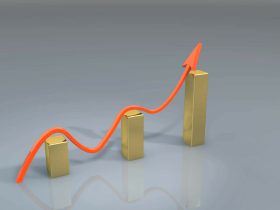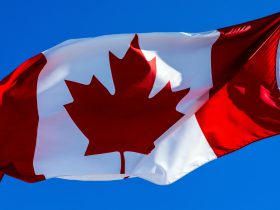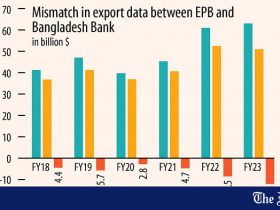Job Growth Slows Sharply as Unemployment Edges Higher
The U.S. economy added a modest 73,000 nonfarm payroll jobs in July, signaling potential trouble in the labor market just as President Donald Trump intensifies tariff policies. While the total was an improvement from June’s revised figure of 14,000, it still came in well below the Dow Jones forecast of 100,000.
At the same time, the unemployment rate rose to 4.2%, in line with expectations. But the bigger surprise came from dramatic downward revisions to prior months: May and June job totals were revised down by a combined 258,000, amplifying concerns that the labor market is cooling faster than anticipated.
Markets React as Confidence Wavers
Following the disappointing report, stock futures dropped and Treasury yields fell, reflecting growing investor anxiety. “This is a gamechanger jobs report,” said Heather Long, chief economist at Navy Federal Credit Union, emphasizing how quickly conditions appear to be shifting.
The weak employment data is prompting speculation that the Federal Reserve could move to lower interest rates at its September meeting. According to CME Group, traders now see a 75.5% chance of a rate cut, up significantly from just 40% before the report was released.
Economic Pressures and Tariffs Impact Hiring Trends
“This is the slowdown we’ve been bracing for,” said Luke Tilley, chief economist at Wilmington Trust. He noted that companies are adjusting to a new cost structure, driven largely by tariffs and inflation, which may be causing firms to pause on hiring.
Job gains in July were narrowly concentrated, with healthcare leading the way, adding 55,000 positions. Social assistance contributed 18,000, meaning nearly 94% of the month’s job creation came from just two sectors. Other gains included:
- Retail trade: +16,000
- Financial activities: +15,000
However, federal government employment shrank by 12,000, and professional and business services lost 14,000 jobs. The government sector has now lost 84,000 positions since peaking in January—largely due to downsizing from Elon Musk’s Department of Government Efficiency.
Fed Officials Signal Concern But Remain Cautious
While Federal Reserve officials are acknowledging the slowdown, they aren’t rushing to conclusions. Atlanta Fed President Raphael Bostic, speaking on CNBC, stated, “Now the test is figuring out how persistent this slowdown is and whether it becomes something more troublesome.”
Though Bostic doesn’t currently vote on the Federal Open Market Committee (FOMC), he does participate in discussions. He has previously supported a single rate cut this year, but Friday’s data may influence that stance.
Wage Growth Holds Steady Amid Labor Weakness
In more positive news, average hourly earnings rose 0.3% in July, matching estimates. On a year-over-year basis, wages grew 3.9%, slightly ahead of expectations, suggesting that worker compensation is still climbing, albeit modestly.
However, the broader household survey painted a gloomier picture. It showed a decline of 260,000 workers, and the labor force participation rate dipped to 62.2%, the lowest level since November 2022.
Broader Jobless Measures Flash Red Flags
The U-6 unemployment rate, which includes discouraged and underemployed workers, rose to 7.9%, its highest since March. Other signs of strain include:
- Average weeks unemployed: Rose to 24.1—the highest since April 2022
- Long-term unemployed (27+ weeks): Jumped to 1.82 million, or roughly 25% of all unemployed
“While we’re not in a labor crisis, the data is pointing to a persistent cooling trend,” said Ger Doyle, regional president at ManpowerGroup. “Hiring momentum is clearly softening, and pressure is mounting on companies and policymakers.”
Trade Tensions and Political Pressure Intensify
Amid the economic uncertainty, President Trump has continued to pressure the Fed to cut interest rates, criticizing Fed Chair Jerome Powell in multiple social media posts. On Truth Social, Trump referred to Powell as a “stubborn MORON” and called on the Fed board to intervene and lower rates immediately.
Administration officials, however, pointed to ongoing tariff negotiations and the administration’s immigration crackdown as factors weighing on job growth.
“Some elements of this report are clearly undesirable,” said Stephen Miran, chair of the Council of Economic Advisors, during a CNBC appearance. “But with powerful policy tools like the trade deals and tax reform in place, we’re optimistic that growth can rebound.”
GDP Still Solid, But Underlying Trends Are Worrisome
Despite softening labor indicators, headline economic growth remains intact. Gross domestic product expanded by 3% in Q2, outperforming expectations. However, analysts attribute much of that to inventory adjustments, especially ahead of Trump’s April 2 “Liberation Day” tariff expansion.
Beneath the surface, consumer demand remains lukewarm, and business investment is beginning to show signs of slowing—raising questions about the sustainability of the recovery.
Conclusion: Labor Market Cooling Raises Policy Stakes
The July jobs report is a clear warning sign that the U.S. labor market may be losing steam, just as the economy faces additional pressure from tariffs, inflation, and geopolitical uncertainty.
While headline GDP remains strong, the decline in job creation, rise in unemployment, and revisions to past data are pushing the Fed into a tough spot ahead of its September meeting. Whether rate cuts come quickly enough to restore confidence remains to be seen.
Reference : Jeff Cox







Leave a Reply